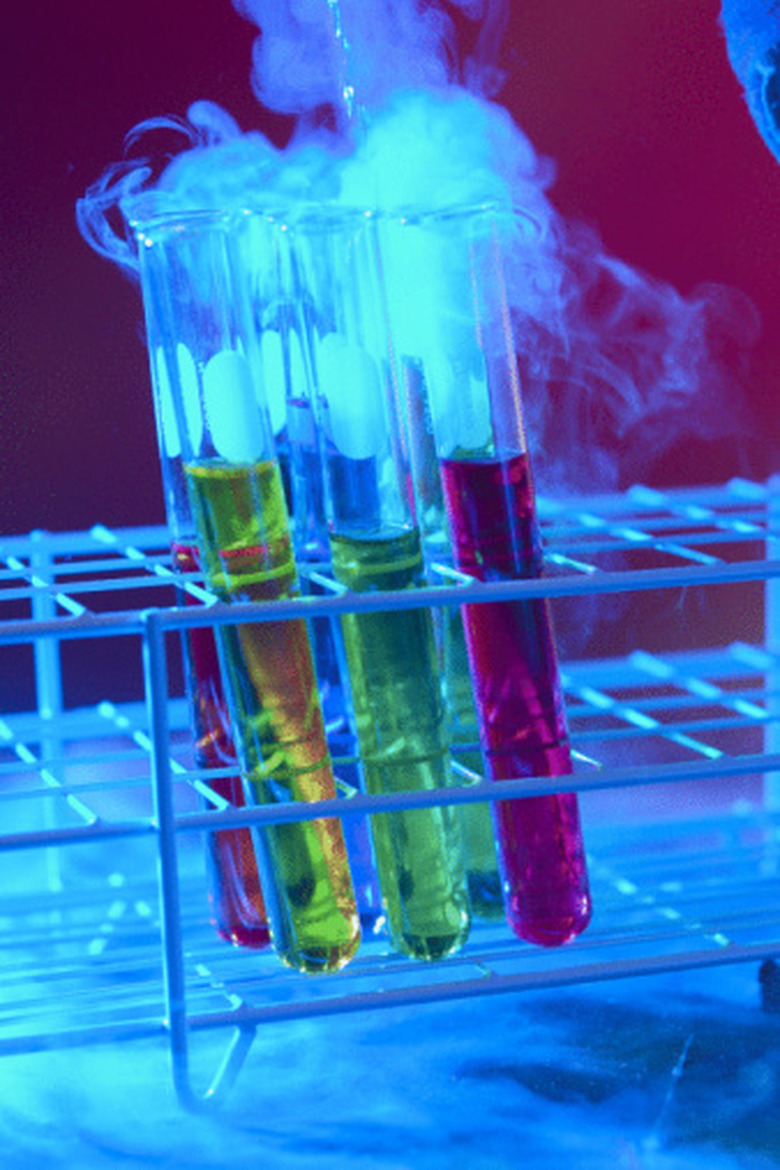How To Calculate Theoretical Yield In Moles & Grams
In a chemical reaction, the reactant species combine in specific ratios and yield product species. Under ideal conditions, you can predict exactly how much product will be produced from a given amount of reactant. This amount is known as the theoretical yield. To find the theoretical yield, you will need to know how much product and reactant you are actually working with (this may differ from the amounts given by the balanced chemical equation) and what the limiting reactant is.
Step 1
Write a balanced equation for the reaction taking place.
Step 2
Calculate the molar mass of each reactant and product by adding up the weights of all the atoms in each molecule. Use a periodic table to determine the atomic weights.
Step 3
Look at the balanced equation and note the ratios between the amounts of reactant and product produced. For example, 1 mole of one reactant may produce 2 moles of product, so the ratio of reactant to product would be 1:2.
Step 4
Look at how much reactant and product you are actually given. If the amounts are exactly the same as in the balanced chemical equation, then the theoretical yield is simply the amount of product given by the balanced equation. Convert this amount to grams by multiplying the number of moles by the molecular weight of the product.
Step 5
Convert the amount of each reactant and product you are working with into moles, if you are provided the amount in grams. To find the number of moles, divide the amount in grams by the molar mass you calculated in Step 2.
Step 6
Identify the limiting reactant. Look at the ratios of reactant to product you obtained in Step 3, and then look at how much reactant you actually have, as calculated in Step 5. The reactant present in least amount, relative to how much is needed to produce a given amount of product, is the limiting reactant.
Step 7
Calculate the theoretical yield, or how much product you can produce given how much limiting reactant you have, by using the ratios obtained in Step 3. For example, from the balanced chemical equation, you might need 2 moles of the limiting reactant to produce 3 moles of product. If you only have 1 mole of the limiting reactant, then you can only produce 1.5 moles of product.
Step 8
Convert the theoretical yield in moles into grams. To do so, multiply the number of moles by the molar mass you calculated in Step 2.
TL;DR (Too Long; Didn't Read)
In reactions with only one reactant, then it is the limiting reactant.
References
- "Chemistry"; John Olmsted, et al.; 2006
Cite This Article
MLA
Francesca, Emma. "How To Calculate Theoretical Yield In Moles & Grams" sciencing.com, https://www.sciencing.com/calculate-theoretical-yield-moles-grams-8650558/. 24 April 2017.
APA
Francesca, Emma. (2017, April 24). How To Calculate Theoretical Yield In Moles & Grams. sciencing.com. Retrieved from https://www.sciencing.com/calculate-theoretical-yield-moles-grams-8650558/
Chicago
Francesca, Emma. How To Calculate Theoretical Yield In Moles & Grams last modified August 30, 2022. https://www.sciencing.com/calculate-theoretical-yield-moles-grams-8650558/
